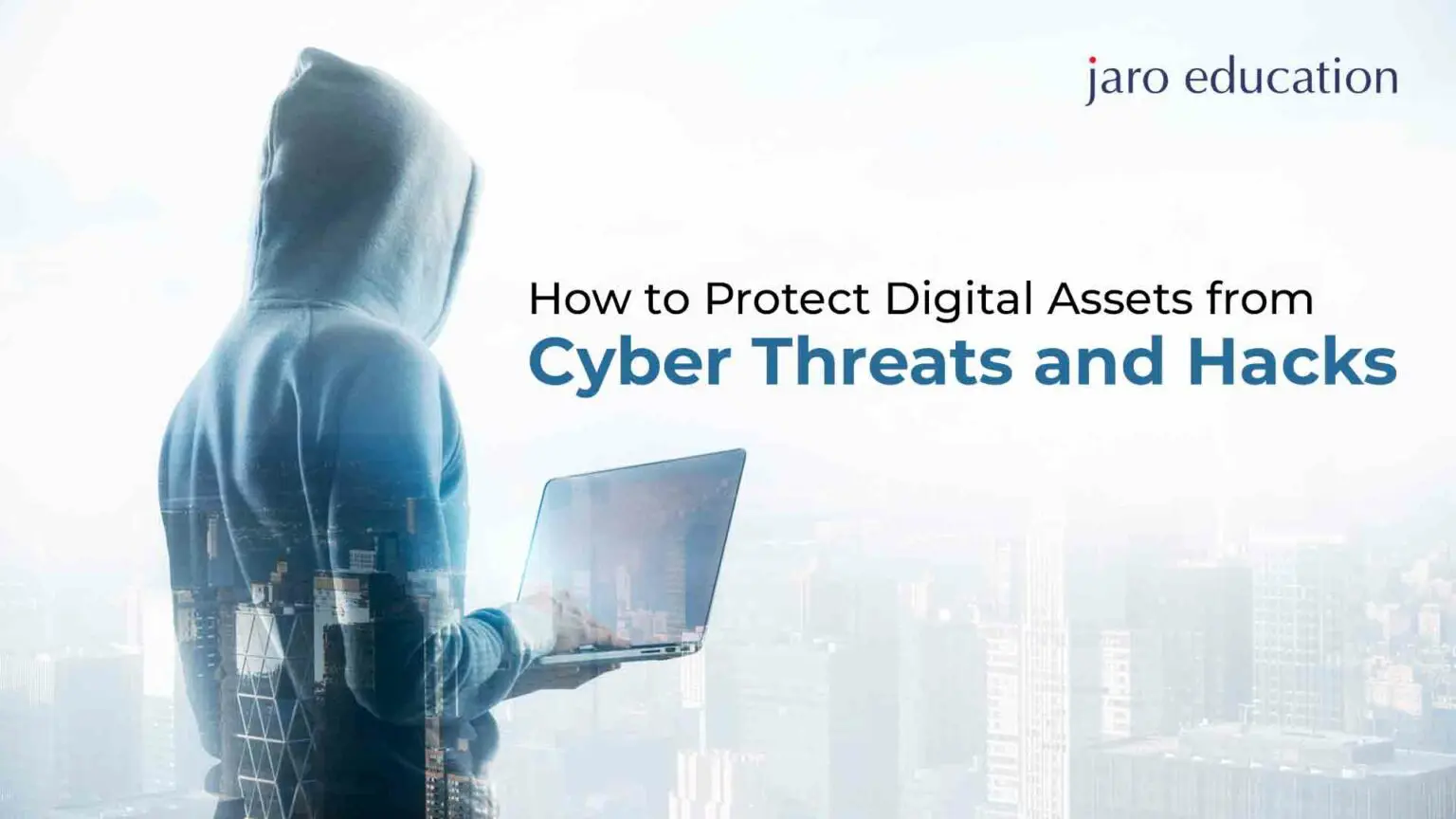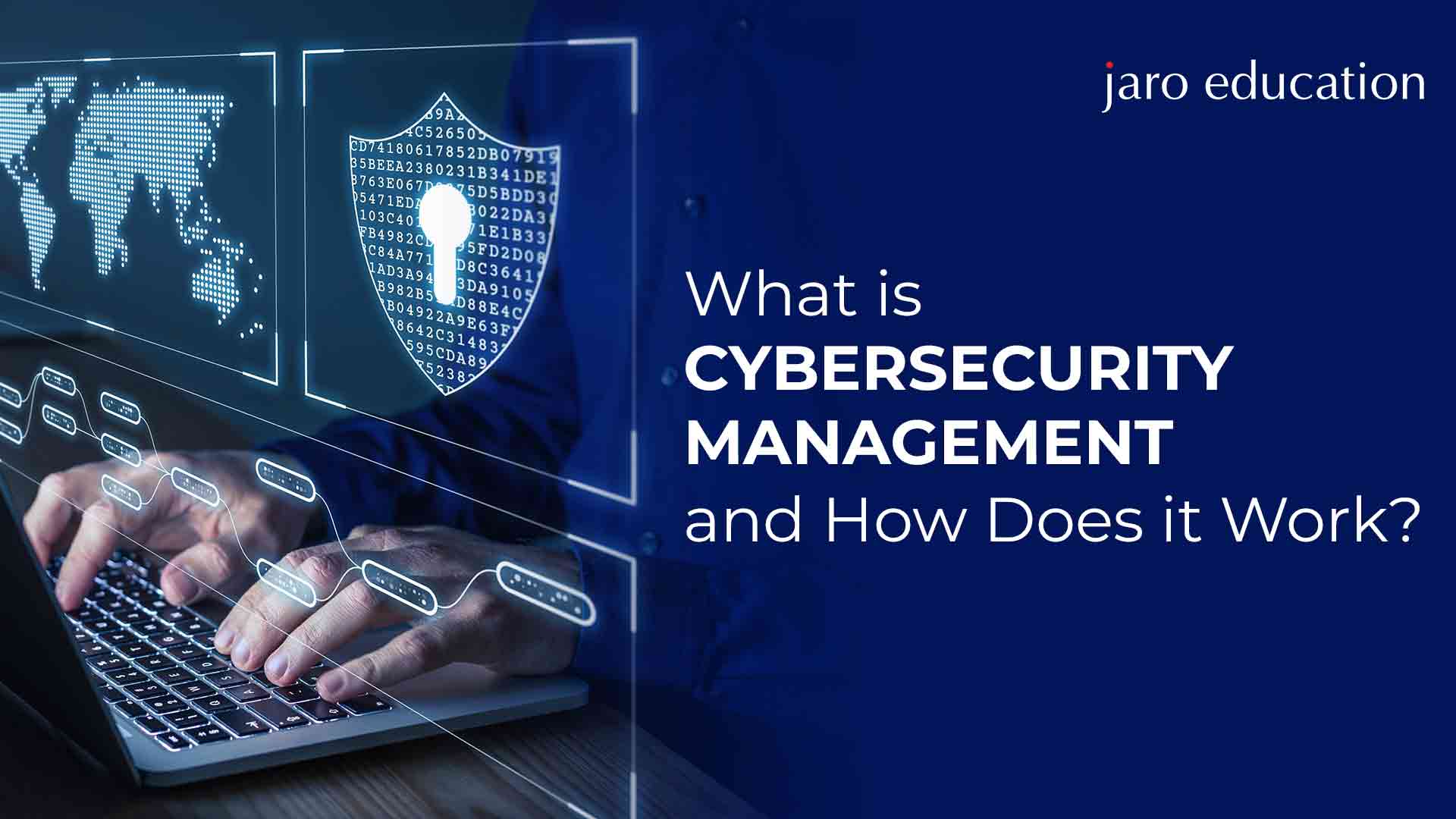How to protect Digital Assets from Cyber Threats and Hacks
Table of Contents

- jaro education
- 26, July 2023
- 6:52 am
Digital assets are any form of electronic data that has value and can be owned, including intellectual property, financial data, personal information, and digital currencies.
As more and more business operations move online, digital assets have become increasingly valuable and vulnerable to cyber threats and hacks. Protecting digital assets is crucial for maintaining business continuity, safeguarding sensitive information, and preserving the reputation of a company.
Cyber threats and hacks refer to any malicious activity aimed at disrupting, stealing, or damaging digital assets. These can include malware, phishing attacks, ransomware, DDoS attacks, and password attacks. With the increasing sophistication of cybercriminals, businesses must stay vigilant and take proactive steps to protect their digital assets.
Thus, in today’s age, it is essential to ensure the protection of its digital assets from any cyber threats and hacks that may compromise its integrity and operations. In this blog post, we will discuss how to protect digital assets from cyber threats and hacks, providing actionable tips for individuals and organizations to safeguard their digital assets.
Common Cyber Threats and Hacks
Malware
Malware refers to any software that is designed to harm or disrupt digital systems, steal data, or gain unauthorized access. Malware can take many forms, including viruses, worms, Trojan horses, and spyware.
Phishing attacks
Phishing attacks involve tricking individuals or organizations into giving away sensitive information by posing as a legitimate entity. These attacks often come in the form of emails or websites that mimic legitimate ones, requesting personal information or login credentials.
Ransomware
Ransomware is a type of malware that encrypts digital assets, making them inaccessible until a ransom is paid to the hacker. Ransomware attacks can have severe consequences for businesses, causing operational disruptions and financial losses.
DoS attacks
Distributed Denial of Service (DDoS) attacks involve overwhelming a digital system with traffic, making it unavailable to legitimate users. These attacks are often carried out using a botnet, a network of infected devices controlled by a hacker.
Password attacks
Password attacks involve attempting to guess or steal passwords to gain unauthorized access to digital assets. These attacks can be carried out through brute force methods or by exploiting weak passwords.
Steps to Protect Digital Assets from Cyber Threats and Hacks
Use strong passwords and two-factor authentication
Strong passwords should be unique and complex, including a mix of letters, numbers, and symbols. Two-factor authentication adds an extra layer of security, requiring an additional authentication factor, such as a code sent to a phone or email.
Keep software up-to-date
Keeping software and operating systems up-to-date ensures that security vulnerabilities are patched, reducing the risk of cyber attacks.
Implement cybersecurity tools such as antivirus software and firewalls
Antivirus software and firewalls can help prevent and detect malware, unauthorized access, and other cyber threats.
Train employees on cybersecurity best practices
Employees should be trained on cybersecurity best practices, including how to identify phishing attempts, how to create strong passwords, and how to report suspicious activity.
Conduct regular security audits
Regular security audits can help identify vulnerabilities and weaknesses in digital systems, allowing for proactive measures that are to be taken to address them.
By implementing these steps, individuals and organizations can significantly reduce their risk of cyber threats and hacks and protect their valuable digital assets.
Additional Tips for Protecting Digital Assets
Backup data regularly
Regular backups of digital assets can help ensure that data can be recovered in case of a cyber-attack or system failure.
Use encryption to protect sensitive information
Encryption can protect sensitive information by encoding it in a way that only authorized parties can access.
Be cautious when sharing information online
Individuals and organizations should be cautious when sharing information online, particularly on social media platforms, to avoid giving away sensitive information that could be used for cyber attacks.
Use a VPN when accessing public Wi-Fi
vulnerable to cyber attacks, and using a Virtual Private Network (VPN) can help protect against unauthorized access and data theft.
Thus, in today’s digital age, protecting digital assets from cyber threats and hacks is crucial for individuals and organizations alike. By implementing the steps outlined in this blog, individuals and organizations can significantly reduce their risk of cyber attacks.
At IIM Nagpur, PG Certificate Programme in Financial Technologies (FinTech) is designed to provide individuals with the knowledge and skills to navigate the digital landscape of finance, including understanding and managing cyber threats and risks. By staying informed and proactive about cybersecurity, individuals, and organizations can protect their valuable digital assets and ensure business continuity.










